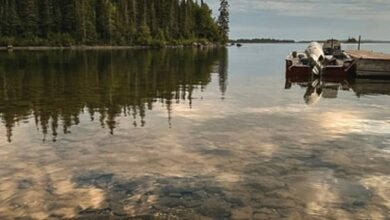How the Denisovans Survived the Ice Age

Baishiya Karst Cave is not an easy place to call home. It is located on a steep, rocky slope on the Tibetan Plateau, 10,700 feet high, where oxygen is scarce and the climate is cold and dry.
But a series of expeditions to the cave in recent years have revealed that it was home to one of the most mysterious branches of humanity: a Neanderthal-like group of people, the Denisovans.
Since 2010, scientists have painted a murky picture of Denisovans (pronounced De-NEE-so-vans) based on just three teeth, a few bone fragments, and traces of DNA. Mystery has shrouded much of their existence, particularly their behavior.
But researchers who dug a few small holes in the Baishyia Karst Cave have discovered a wealth of clues about Denisovans. In a paper Published Wednesday, they reported that for more than 100,000 years, Denisovans hunted or ate a wide variety of animals on the Tibetan Plateau, from blue sheep to snow leopards and even golden eagles. In addition to eating the animals, Denisovans likely skinned their hides to make clothing to stay warm in freezing temperatures.
The first evidence of Denisovans was found about 2,250 kilometers northwest of that site, in Denisova Cave in Siberia. DNA from a single tooth and a pinky bone showed that the group belonged to a separate lineage from modern humans and Neanderthals.
Geneticists later discovered that millions of living people carry Denisovan genes, suggesting that modern humans interbred with them and Neanderthals before the two groups disappeared.
The Tibetan cave was a Buddhist shrine for centuries. In 1980, a monk who came to pray there saw part of a jawbone lying on the ground. The specimen languished in a museum drawer for years until Dongju Zhang, an archaeologist at Lanzhou University, took a closer look.
The jaw looked human, but lacked some key features, such as a prominent chin. And the two molars still embedded in the bone were larger than human teeth. Dr. Zhang suspected it might be a Denisovan. So she and her colleagues searched the Tibetan jaw for DNA, but to no avail. They had better luck when they looked for collagen proteins.
The scientists then compared the structure of the proteins to the collagen genes of modern humans, Neanderthals and Denisovans. The best match was the Denisovan gene.
In 2016, Dr. Zhang began leading expeditions into the cave to learn more. During more recent visits, her team dug a pair of holes six feet deep into the cave floor.
The expeditions revealed that the jaw must have been more than 160,000 years old. The sediment also yielded four fragments of Denisovan DNA. The oldest came from a layer formed about 100,000 years ago, and the youngest from a layer formed between 48,000 and 32,000 years ago.
If true, it would raise the tantalizing possibility that modern humans and Denisovans interacted on the Tibetan plateau. Archaeologists have found stone knives elsewhere on the plateau that are at least 30,000 years old and characteristic of modern humans.
When Dr. Zhang and her colleagues dug deeper, the researchers also found thousands of bone fragments in the holes. But they had no idea what species the battered pieces belonged to.
The researchers ground up the samples and found enough collagen to identify 2,005 bones.
One of these, a rib fragment, contained collagen from a Denisovan. The rib came from the same sediment layer that yielded the most recent Denisovan DNA.
Samantha Brown, an anthropologist at the University of Tübingen in Germany who was not involved in the study, said the finding of both the DNA and the rib in the same layer is strong evidence for the existence of Denisovans in Tibet at such a recent time.
“This is such an exciting discovery,” she said. “Without these multiple lines of evidence, it might have felt too good to be true.”
But Tom Higham, an archaeological scientist at the University of Vienna, said it was unfortunate that Dr Zhang’s team had not been able to find DNA in the rib, nor carbon that they could use to accurately date it. “For me it’s quite a disappointment,” he said.
Dr. Zhang and her colleagues concluded that the other 2,004 bones belonged mainly to animals that the Denisovans brought to the cave. Many of them show cut marks indicating that they had been butchered.
The Denisovans seem to have had a preference for blue sheep, a species that still lives on the Tibetan plateau. But Denisovans also hunted or ate carnivores and birds of prey. They were also not averse to killing marmots, rodents the size of cats that hibernate in the winter.
Frido Welker, a molecular anthropologist at the University of Copenhagen and one of Dr Zhang’s research partners, said the evidence from the Baishiya Karst Cave indicated that Denisovans successfully adapted to the Tibetan Plateau even during the Ice Age.
“Denisovans weren’t there by chance on a random day,” he said. “They held out there for a much longer period of time, which tells you something about their resilience.”




